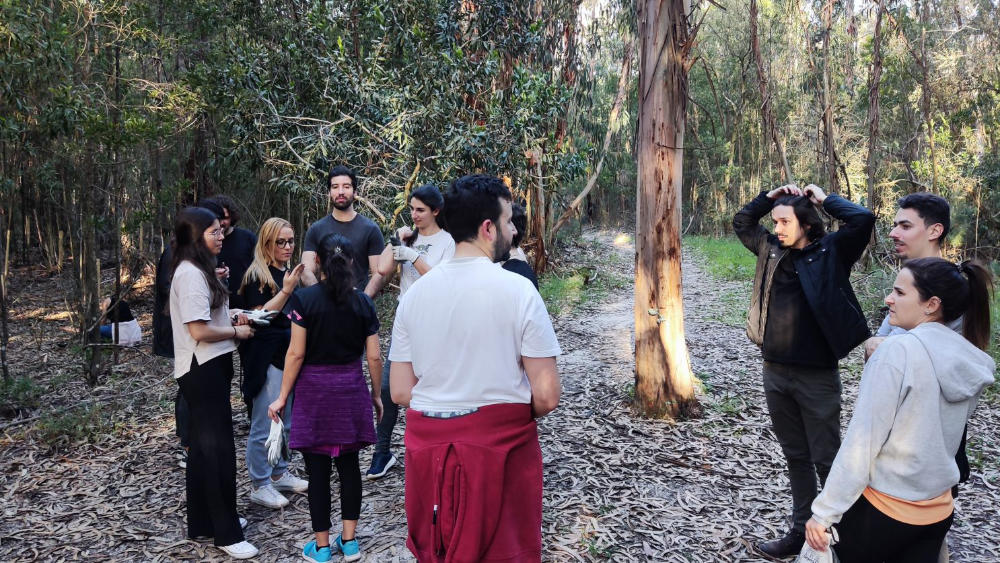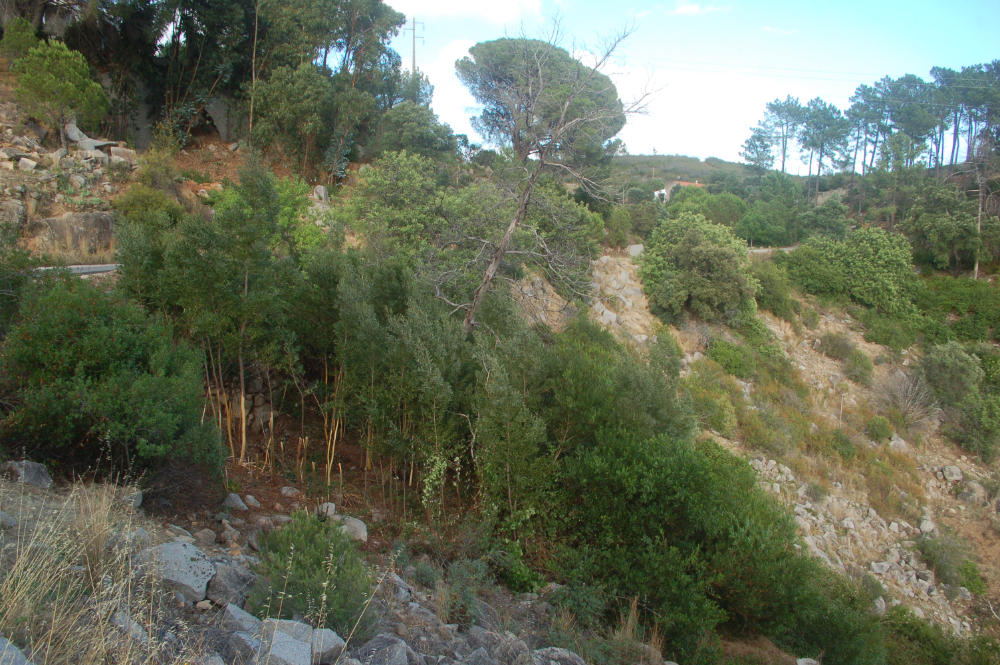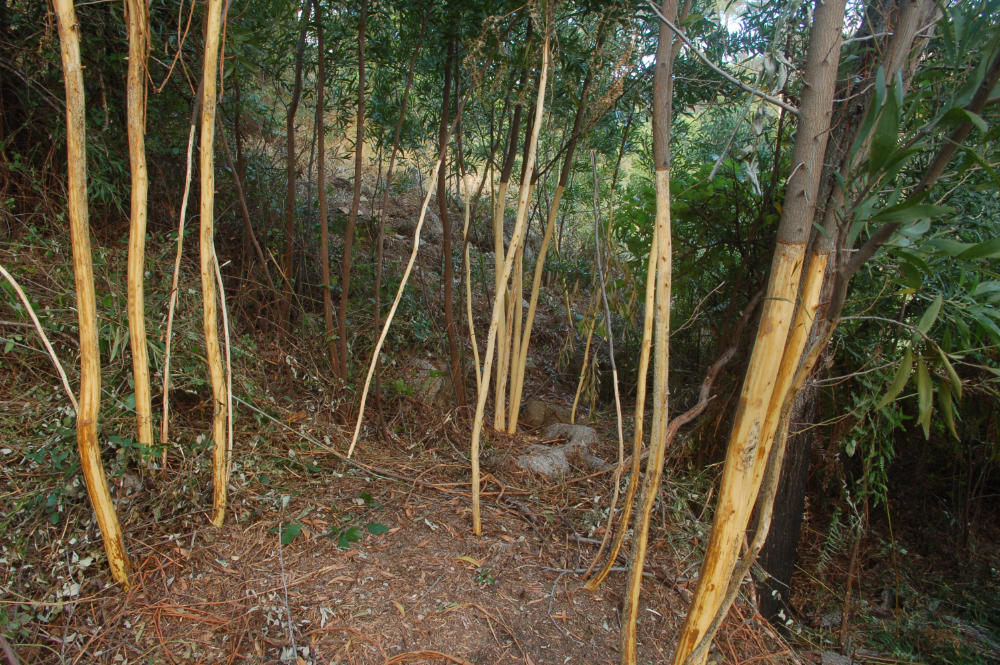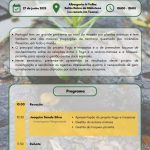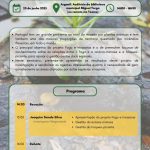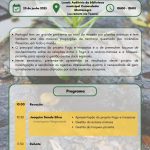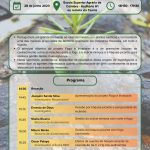Saturday 17th June 2023.
There is at least one of the 308 districts of Portugal where democracy was never really thought through to its logical conclusion. Despite the fact that in Monchique too the coming year will bring the fiftieth birthday of revolutionary celebrations, an important promise is being allowed to lapse – namely the narrative of a better future through wealth. For wealth is the exact lofty magic word and the cosy state of being that many citizens were hoping for (not only) in Monchique as a result of the Carnation Revolution 1974 and of membership in the great big European Union back in the day in 1986 when Portugal became a member of the EU. Nearly forty years have gone by now – high time so for a bit of a review.
Living in harmony with nature, what does that mean? Is it something you just say without thinking, a turn of phrase, a quiet wish? My thoughts are stuck on that Monday after a particular weekend, when I saw three fire trucks parked on the kerb on the southern rim of Monchique, at Pé da Cruz, full of water. The three vehicles were leaking a little trickle from their badly sealed water tanks. Ten firefighters or more were drinking beer, arguing heatedly and smoking cigarettes. Taking a break, they were not receiving their orders because the commander of their civil protection unit had left his desk at the heliport headquarters. Above the heads of the firefighters the forest is burning at the summit of Picota. They don’t really seem to care. Their attention is focused not on the fire but on something else. They are talking about corruption in politics.
The owners of the homesteads up on Picota however had been evacuated by the GNR (police) the night before, Sunday 5 August 2018, with a promise, that in fighting the fires, one could rely on the firefighting services. Yet what does a firefighter from Lisbon or Porto have to do with a forest fire in far-away Monchique in southern Portugal? Why are firefighters from all over the country ordered to work in Monchique, where fires occur every few years? Can one trust this kind of firefighters? This is the question I ask myself on that Monday, 6 August 2018. For on that day, at that time Europe‘s biggest forest fire cut a swath of destruction through the Monchique mountain range, something we have to talk about once more today, nearly five years on, as this forest fire destroyed wealth across 288km². Our colleague Miguel Sousa Tavares recently wrote in the weekly Expresso newspaper that he was hoping the incompetence of politics was not once again responsible for the destruction of nature. As we well know, hope is the last to die…
More often than not, writing history is about looking back, where certain correlations become clearer, as well as the reasons behind disasters with consequences that reach well into the future. It’s only by mentally and emotionally working through them that we’ll be able to prevent natural disasters such as Pedrógão Grande in 2017 and Monchique in 2018, as well as many more serious events in times of climate change. The lack of water for instance. And this is exactly what this is about in the here and now. For right now in 2023, water is becoming scarce in Monchique…
Reducing the risk of forest fires?
On Saturday, 28 March of that year, at 10.26am, the mayor of Monchique, Paulo Alves, receives a short email which aims to let him have first-hand information. When it comes to politicians, it’s always a good idea to keep things short and sweet, as they hardly even have time for themselves, nearly always concentrating on external issues. On this 28 March, the socialist Paulo Alves receives exclusive information regarding forest fire prevention and drought in times of climate change: https://invasoras.pt/en/invasive-plant/acacia-dealbata
Living in harmony with nature, could that also mean that one might learn to renounce a „business“ if it harms the resources of nature in such a lasting way that the community gambles away its entire future with this business? Many citizens of Monchique, in particular those who own land, have since the mid-20th century been living off wood, a raw material obtained from logged trees, here eucalyptus in particular, that is turned into cash. Eucalyptus is a species of tree relying on a lot of groundwater. We are talking about a kind of tree which is not native to Portugal, yet is cultivated on around 10,000km² (1,000,000 ha), i.e. on an area 25 times the size of the district of Monchique, over ten per cent of Portugal’s land area. Just to compare: the state of Portugal covers some 92.000km².
Invasive Plants in the Portuguese Forest is also the subject of research of four young scientists of ICAAM of Évora University, writing a 24-page scientific paper published by MDPI* on 19 November 2019, with regular updates. This paper turns the spotlight on another tree species which matches the negative qualities of eucalyptus. The authors write that wood is a crucial part of the Portuguese economy. They portray another tree species from Australia, brought in by mistake, like a pandemic, an illness, an idiocy, which in the meantime is shaking the foundations of humankind: the acacia, a tree species that multiplies exponentially following forest fires. This kind of tree has no commercial value as such, whether for industry or the economy, or for the state, also because acacias (or mimosas) don’t flush any tax money into the state coffers. Why then, in God’s sweet name, are there acacias and mimosas in Portugal? Because they have those lovely yellow blooms, so pleasing to the eye?
Invasive tree species have the habit of rising up against humankind, ruler of nature. And not only that. They kill off native trees: cork oaks, umbrella pines, carob trees, and many more. Their destructive work happens very quietly, in an entirely unspectacular fashion and with an implacable ruthlessness already preparing the next big forest fire. At the moment, before the arrival of summer, the shoots of the acacia and mimosa trees are sheared off using brushcutters by a number of clean-up teams contracted by local city halls. A big mistake, with expensive implications: for every cut-off tree, ten and more new trees will sprout out of the soil. The acacia (and the mimosa too) depletes the soil of any moisture. Its roots spread out both deep and wide. Also: after each forest fire is also before the next forest fire without adopting an adequate policy for the protection of nature and humankind (flora and fauna), and if the problem called „acacia“ is simply left to fester.
Next week you can read here which efforts the new Botanical Gardens in Caldas de Monchique is making to fend off the constant attacks by acacias and mimosas in order to guarantee biodiversity and the diversity of the native flora and fauna.
Nota de imprensa – Escola Superior Agrária
Seminários (Lousã e arganil – 20 de junho; Albergaria-a-Velha – 27 de junho) + Workshop (ESAC | Auditório H1 – 28 de junho)
Resultados do projeto “Fogo e Invasoras” são apresentados publicamente
A equipa do projeto de investigação “Fogo e Invasoras”, financiado pelo programa PDR2020, liderado pela Escola Superior Agrária do Instituto Politécnico de Coimbra (ESAC-IPC) e coordenado pelo professor Joaquim Sande Silva, organiza este mês um conjunto de eventos para divulgação dos resultados do projeto.
Serão promovidos três seminários: no dia 20 de junho, das 10h00 às 12h00, na Lousã, no auditório da biblioteca municipal Comendador Montenegro, e das 14h30 às 16h30, em Arganil, no auditório da biblioteca municipal Miguel Torga; e no dia 27 de junho, das 10h00 às 12h00, em Albergaria-a-Velha, no Salão Nobre da biblioteca. Será ainda levado a cabo um workshop, a ter lugar no dia 28 de junho, das 14h30 às 17h30, no auditório H1 da ESAC. Os eventos serão realizados presencialmente e remotamente via plataforma Teams.
O principal objetivo do projeto é aumentar o conhecimento sobre as relações entre o fogo e duas espécies invasoras: a acácia-mimosa e a háquea-picante, de modo a melhorar a gestão destas espécies. Nestes eventos, além da apresentação dos resultados do projeto, pretende-se sensibilizar os agentes interessados quanto à necessidade de gerir corretamente as áreas afetadas por estas duas espécies.
Os interessados em participar on-line, deverão inscrever-se em:
- Seminário Lousã – https://bit.ly/SeminarioFogoeInvasoras_Lousa
- Seminário Arganil – https://bit.ly/SeminarioFogoeInvasoras_Arganil
- Seminário Albergaria-a-Velha – https://bit.ly/SeminarioFogoeInvasoras_Albergaria-a-Velha
- Workshop – https://bit.ly/WorkshopFogoeInvasoras_2023_ESAC
 Eco123 Revista da Economia e Ecologia
Eco123 Revista da Economia e Ecologia

